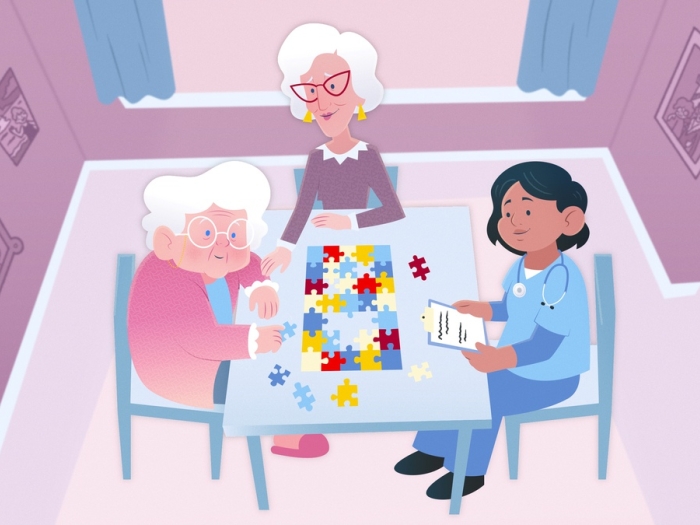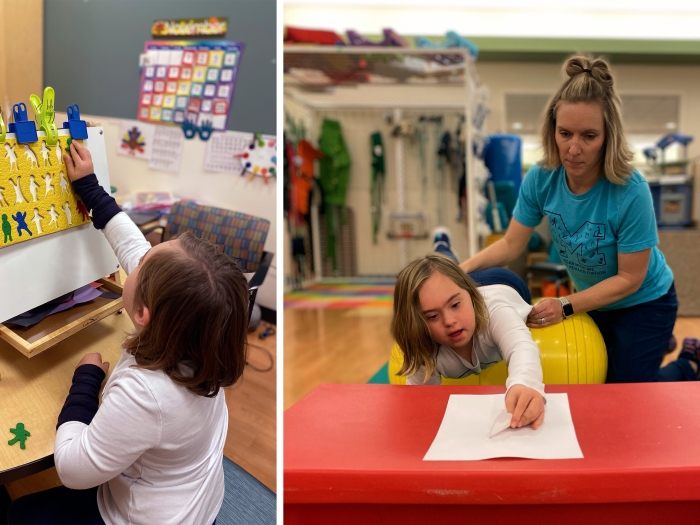Cutting-edge patient-centered “smart tests” will allow clinicians to evaluate specific quality of life concerns for individuals with Huntington’s disease.
7:00 AM
Author |

Huntington's disease is an inherited disease that leads to problems with movement, thinking and mood which can negatively affect an individual's quality of life.
SEE ALSO: 'Game-Changing' Alzheimer's Drug Just a First Step
The fatal disease progressively causes nerve cell degeneration in the brain. Typically, individuals with Huntington's disease develop symptoms during their 30s or 40s, and these symptoms gradually worsen until death.
"The cognitive, behavioral and motor symptoms associated with Huntington's disease can significantly impair an individual's ability to perform their daily routine or lifestyle," says Noelle Carlozzi, Ph.D., associate professor of physical medicine and rehabilitation and director of the center for Clinical Outcomes Development and Application at the University of Michigan.
Carlozzi is the lead author of four new papers which present the results of her National Institutes of Health-funded study to develop new patient-reported outcome measures for Huntington's disease.
Patient-reported outcome measures allow clinicians to identify, understand and evaluate an individual's most important health concerns and whether current treatments are working. An example of a patient-reported outcome is when a patient is asked to describe his or her level of pain to a physician on a scale of 1 to 10, with 1 being little to no pain and 10 being the most pain the patient has ever felt.
Many patient-reported outcome measures exist, but measures are often geared toward the general population or other diseases and don't capture the specific symptoms, symptom burden and challenges that people face living with Huntington's disease.
"Although we have several ways to measure changes in health, for example through blood tests or magnetic resonance imaging [MRIs], these tests do not necessarily capture patient concerns," Carlozzi says. "My work is focused on developing patient-centered outcome measures that can capture the effect a disease has on an individual's physical, mental and/or social health."
'Smart tests' tailored to the patient
Carlozzi's four papers appear in the October 2016 print issue of Quality of Life Research journal and feature the Huntington disease quality of life (HDQLIFE) measurement system. All measures within this system were developed as computer-adaptive tests, or "smart tests," and are designed to relay information directly from patients to their clinicians about how Huntington's disease impacts their lives.
SEE ALSO: Improving Access to Epilepsy Care for Children in Michigan
Carlozzi and team held focus groups of patients with Huntington's disease, and separate groups for their family members and health care providers. The researchers asked several questions, such as how does having Huntington's disease affect quality of life, and identified the most important aspects of how the disease impacts social, emotional and physical well-being based on their responses.
"We used these discussions to identify the most important aspects of quality of life for these patients," Carlozzi says. "We looked at previously developed quality-of-life measurement scales that are not specific to Huntington's disease, called PROMIS [Patient-Reported Outcomes Measurement Information System] and Neuro-QoL [Quality of Life in Neurological Disorders], and identified aspects that were unique, as well as aspects from these measures that were relevant to individuals with Huntington's disease."
The team then used established measurement development procedures (which involved confirmatory and exploratory factor analysis and item response theory graded response models) to develop new patient-reported outcome measures for Concern with Death and Dying, Meaning and Purpose, Difficulties with Speech, Difficulties with Swallowing, and Chorea. They then took these five new measures, combined with general measures of quality of life relevant to individuals with Huntington's disease, to create the new HDQLIFE measurement system.
"This new measurement system will help clinicians monitor patients with Huntington's disease by detecting small, but important, changes in health-related quality of life," Carlozzi says. "Patient-reported outcome measures can allow for more efficient Huntington's disease clinical trials and enable patients to more effectively communicate their concerns to their providers during clinic visits."
All of these smart tests are individually tailored so the patient sees only questions or items that are the most relevant to him or her. The test administers the first item, and using calibration statistics, chooses the next best item based on the respondent's previous answer.
"Using this type of approach, respondents typically only answer four to eight questions per domain, and these measures only take one to two minutes to administer," Carlozzi says. "We're able to get an accurate response, without sacrificing sensitivity, and the patient doesn't have to sit and answer 50 to 100 questions."
She explains this is a positive move.
"We don't want to be asking an individual, especially one with cognitive problems, to take a long test. These findings will decrease the burden on patients and maximize efficiency for clinicians," she says.
Carlozzi hopes this work will improve patient and physician communication by giving patients a voice and a way to express their most troublesome symptoms.
"When you're working with a rare disease such as Huntington's disease, it is important that our measures are sensitive enough to detect subtle changes in functioning," she says. "Better measures mean we need fewer people in our clinical studies to know whether or not our treatments are working."
Participants were recruited at several locations in the USA to ensure a geographically diverse sample. This included eight established Huntington's disease clinics (UCLA; University of Iowa; Indiana University; Johns Hopkins University; University of Michigan; Struthers Parkinson's Center; Washington University; and Rutgers University) and the National Research Roster for Huntington Disease Patients and Families. Participants were also recruited in conjunction with other ongoing research studies, such as PREDICT-HD (UCSF; University of Iowa; University of Indiana; Johns Hopkins University; Washington University; and Cleveland Clinic), as well as in cooperation with Huntington's disease support groups and Huntington's disease specialized nursing home units (Phoenix, Arizona; Tuscon, Arizona; Denver, Colorado; Jacksonville, Florida; Des Moines, Iowa; Louisville, Kentucky; Lansing, Michigan; Robbinsdale, Minnesota; Lakewood, New Jersey; Plainfield, New Jersey; New York, New York; Dallas, Texas; and Seattle, Washington). Data Analysis was conducted at University of Michigan and Northwestern University.
Bryon Quertermous contributed to this report.

Explore a variety of healthcare news & stories by visiting the Health Lab home page for more articles.

Department of Communication at Michigan Medicine
Want top health & research news weekly? Sign up for Health Lab’s newsletters today!





